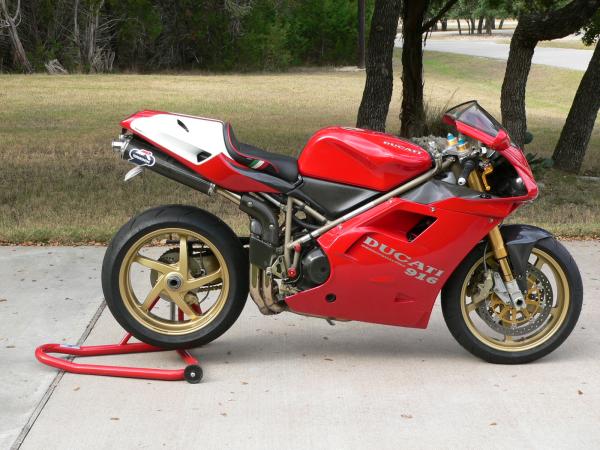
THIS YEAR marks a quarter of a century since the unveiling of the Ducati 916 – a bike that even now has arguably never been surpassed in terms of either outright beauty or sporting success.
In terms of motorcycle styling, future generations will probably be able to simply split classic bikes into two categories. There’s the ‘Before 916’ era, when headlights came in two flavours – round or square – and bodywork generally appeared to be an afterthought; something that was tacked on at the last minute when all the important mechanical work had been done. And there’s the ‘After 916” period, when everyone else was forced to up their game in response to a bike that simply moved the goalposts.
1994: 916 Strada Monoposto
It all started at the end of 1993, when Ducati unveiled the 1994 916. It wasn’t a huge surprise; spy shots had been floating around for months and everyone knew Ducati was preparing a rather special replacement for its fast but boxy-looking 888 superbike. But the sheer beauty of the thing still made it an instant star.
Technically, too, it was clever. While it wasn’t the first bike to sport a single-sided swingarm or under-seat exhausts, these design elements had never been so well integrated. Massimo Tamburini would later admit that the Honda NR, was an influence, but his design was so much better proportioned that it could never be considered a copy.
Those looks alone would have guaranteed success, but the 916 was also an instant success on track. Not surprising, really, given that its predecessor was already a WSB championship winner and Ducati’s lead rider, a certain Carl Fogarty, was just getting into his prime.
The road bike’s specs included a fuel-injected, 114hp, 916cc version of Ducati’s desmo-valved, DOHC V-twin and Showa suspension front and rear.
1994: 916 SP
While the Strada made up the lion’s share of early 916 production, the SP (Sport Production) model was the one that everyone really wanted. Just 1208 were made between 1994 and 1996, but their actual specs varied from year to year (they’re now considered as SP1, SP2 and SP3 thanks to those annual tweaks). Compared to the Strada they all had new con rods and crankshafts, thicker barrels, different injectors and a host of other changes, many hard to spot. Power rose to 131hp. On the chassis side, an Ohlins shock replaced the base model’s Showa, although the forks were still Showas. Despite its racing success and the appeal of the 916, Ducati was in dire financial straits in this period, and components would be changed depending on what it had in stock and which suppliers’ bills were being paid, so even two machines from the same year might have different parts bolted on direct from the factory. A nightmare for restorers and concours judges.
1994: 748
While not strictly a 916, there’s no question that the smaller 748 is part of the same family. In fact it’s tough to tell the two apart without reading the badge on the side. A smaller 88mm bore (down from 94mm) and 61mm stroke (66mm for the 916) achieved the 748cc capacity. The only other tell-tale of the 748 is the smaller 180-section rear tyre, compared to the 190 on the 916.
1995: 916 Biposto
While the very earliest 916s were single-seat only, a two-seat model was always planned and in 1995 the Biposto – literally ‘two seat’ – arrived. Changes compared to the Monoposto (‘one seat’) model were basically limited to the addition of a pillion seat – body coloured, so it still looks much like a single-seater – and pegs.
